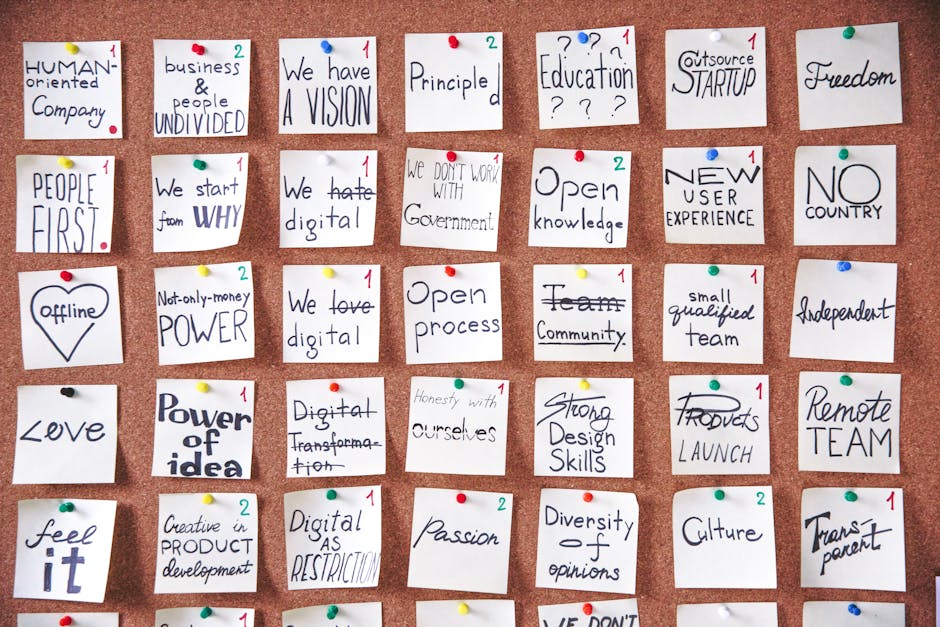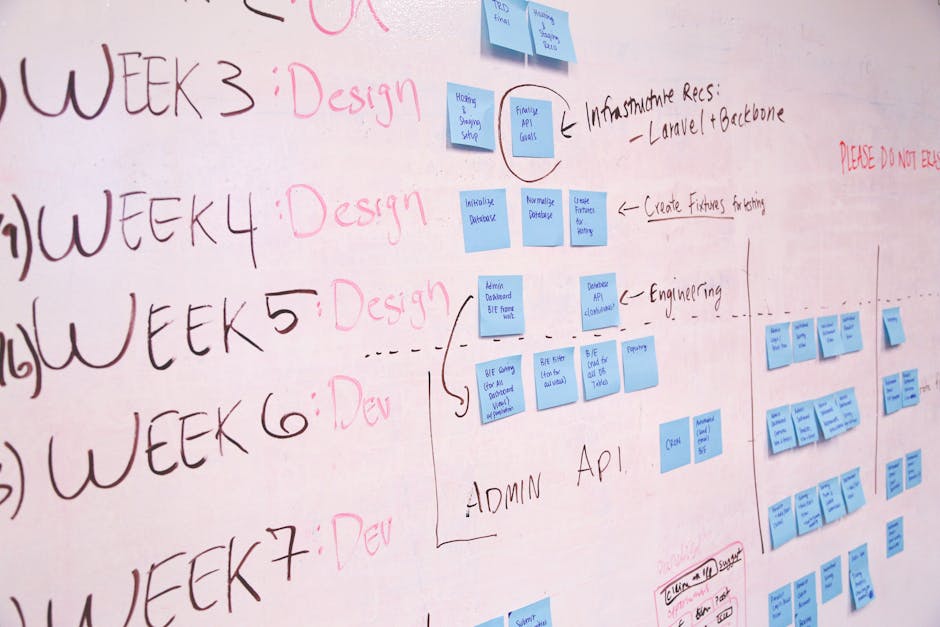Legacy To Future: A Step-By-Step Guide To COBOL System Migration For Decision-Makers
Imagine standing at the crossroads of technology, gazing upon the vast landscape of progress that lies ahead. In front of you, a legacy COBOL system stands as a towering relic from the past, holding within it years of valuable data and business processes. As a decision-maker, you understand the need to embrace the future and migrate this system to modern technology. But where do you begin?
Welcome to ‘Legacy to Future: A Step-by-step Guide to COBOL System Migration for Decision-makers.’ This comprehensive article is your roadmap to success in navigating the complex journey of migrating your COBOL system.
In these pages, we will explore each crucial step along the way – from assessing the current state of your COBOL system and setting clear goals for migration, to evaluating modernisation options and creating a migration plan with a well-defined timeline.
We will also delve into resource allocation and budgeting considerations, testing and quality assurance protocols, as well as seamless integration techniques and employe training strategies.
By following this guide, you will gain a deep understanding of the process involved in migrating your COBOL system while ensuring minimal disruption to your business operations.
So let’s embark on this transformative journey together – from legacy to future!
Key Takeaways
- Assess the current state of the COBOL system and evaluate its security measures, stability, reliability, scalability, and adaptability.
- Engage in open dialog with stakeholders to understand concerns, requirements, and priorities, and set realistic expectations.
- Evaluate modernisation options such as rewriting, COTS solutions, or cloud-based platforms, considering technical feasibility, cost implications, compatibility, and business goals.
- Create a comprehensive migration plan and timeline, breaking down the migration into smaller tasks with clear deadlines, and allocate necessary resources and budget for successful software modernisation.
Assessing the Current State of Your COBOL System

Now that you’ve got your COBOL system up and running, it’s time to take a step back and assess where things currently stand. Assessing the current state of your COBOL system is crucial for determining its vulnerabilities and migration readiness.
This process involves evaluating various aspects of your system to identify any weaknesses or potential risks. Start by examining the security measures in place within your COBOL system. Look for any outdated or ineffective security protocols that could leave your system vulnerable to cyberattacks or data breaches.
Additionally, consider the overall stability and reliability of your system. Are there any frequent crashes or performance issues that need to be addressed?
Another important aspect to assess is the scalability and adaptability of your COBOL system. Determine whether it can accommodate future growth and technological advancements without requiring significant modifications or updates. Additionally, evaluate the compatibility of your current infrastructure with modern systems and platforms.
By thoroughly assessing these areas, you will gain a comprehensive understanding of the strengths and weaknesses of your COBOL system. This assessment will help guide you in identifying goals and objectives for migration, which we will discuss in the subsequent section about ‘identifying goals and objectives for migration.’
Identifying Goals and Objectives for Migration

Identifying goals and objectives for migration involves pinpointing the desired outcomes and aims of the transition process. Setting realistic expectations is crucial in order to ensure a smooth and successful migration from a COBOL system to a modernised platform.
This involves understanding the limitations of the current system, as well as the capabilities and benefits that can be achieved through migration.
One important aspect of setting goals and objectives is managing stakeholder communication. It’s essential to involve all relevant parties, including IT personnel, business leaders, end-users, and any other individuals who may be impacted by the migration. By engaging in open dialog with stakeholders, you can gain valuable insights into their concerns, requirements, and priorities.
Additionally, clear communication helps in alining everyone’s expectations regarding what can realistically be achieved through the migration process. This includes defining specific milestones or measurable targets that will indicate progress towards achieving the overall objectives.
By identifying goals and objectives for migration upfront, you can pave the way for a successful transition that meets both technical requirements and business needs. As you move forward with evaluating modernisation options, it’s important to keep these goals in mind in order to make informed decisions about which approach will best meet your organisation’s needs.
Evaluating Modernisation Options

Evaluating modernisation options involves assessing different approaches and considering their potential impact on both technical requirements and business needs. When exploring alternatives, it’s crucial to consider the risks associated with each option.
One possible approach is rewriting the COBOL system in a modern programing language like Java or C#. This can provide greater flexibility, improved performance, and access to a larger pool of developers. However, it may require significant time and resources to rewrite the entire system, as well as retraining existing staff members.
Another option is to use a commercial off-the-shelf (COTS) solution that can replace the legacy COBOL system. This can offer quick implementation and reduced development costs. However, there may be limitations in customisation and compatibility with existing systems.
Alternatively, organisations can choose to migrate their COBOL system to a cloud-based platform. This allows for scalability, increased security, and easier integration with other cloud services. However, careful consideration should be given to data privacy regulations and potential vender lock-in.
By evaluating these modernisation options based on technical feasibility, cost implications, compatibility with existing systems, and alinement with business goals, decision-makers can make informed choices when creating a migration plan and timeline for their COBOL system without compromising critical functionality or business operations.
Transitioning into the subsequent section about creating a migration plan and timeline, it’s important to understand that this step will outline key actions required for successful implementation of the chosen modernisation strategy while minimising disruption to day-to-day operations.
Creating a Migration Plan and Timeline

To successfully transition your organisation’s outdated software to a modernised solution, it is crucial for you to craft a comprehensive migration plan and timeline that strategically maps out the necessary actions while minimising disruption to day-to-day operations. A well-designed migration strategy will ensure a smooth implementation process and help mitigate risks associated with such a significant change.
Creating a migration plan requires careful consideration of various factors, including the complexity of your existing system, the desired end state, and the resources available. It involves identifying key milestones, setting realistic timelines, and assigning responsibilities to individuals or teams involved in the process. By breaking down the migration into smaller tasks and establishing clear deadlines, you can effectively manage progress and keep everyone accountable.
In order to grab your attention and provide an overview of the migration plan at a glance, consider using a table like this:
| Task | Description |
|---|---|
| Assessment | Evaluate current system architecture and identify pain points |
| Planning | Define goals, scope, budget constraints, and resource allocation |
| Testing | Conduct thorough testing of new system functionality |
| Deployment | Migrate data from legacy system to modernised solution |
Crafting an effective migration plan is just one step towards ensuring successful software modernisation. In the subsequent section about allocating resources and budgeting for the migration, we will discuss how to secure the necessary support for this important initiative.
Allocating Resources and Budgeting for the Migration

Allocating resources and budgeting for the migration is a crucial step in ensuring a smooth transition to modernised software, and it allows you to effectively support this exciting initiative.
Resource allocation involves identifying the necessary personnel, equipment, and tools needed for a successful migration. This includes assigning skilled developers who are experienced in both COBOL and modern programing languages to handle the transformation process. Additionally, hardware upgrades or cloud infrastructure may be required to accommodate the new system.
Cost estimation is another important aspect of resource allocation. It involves determining the financial resources needed for the migration project. This includes expenses such as developer salaries, hardware costs, software licences, training programmes, and potential downtime during the transition period.
To accurately estimate costs, it is essential to conduct a thorough analysis of your current system and identify any potential challenges or risks that may arise during the migration process. By doing so, you can allocate sufficient funds to mitigate these issues and ensure a successful transition.
Incorporating project management techniques such as creating a detailed timeline and setting clear milestones will help in allocating resources efficiently. Regular monitoring of progress will enable you to make adjustments as needed throughout the migration process.
As you move forward with resource allocation and budgeting for your COBOL system migration project, it’s important to consider how testing and quality assurance will play an integral role in ensuring a seamless transition.
Testing and Quality Assurance during the Migration Process

Don’t overlook the crucial role that testing and quality assurance play in ensuring a smooth migration process for your modernised software. Automated testing is a key component of a successful migration, as it allows for efficient and accurate identification of any potential issues or bugs. By automating test cases, you can save time and resources while ensuring thorough coverage of all functionalities.
To effectively manage the migration risks, consider the following steps:
-
Develop a comprehensive test plan: Define clear objectives, identify key functionalities to be tested, and establish metrics to measure success. This will help prioritise testing efforts and ensure that critical areas are thoroughly validated.
-
Execute rigorous regression testing: As you make changes to your system during the migration process, it’s important to retest existing functionalities to ensure they still work as intended. Regression testing helps identify any unintended consequences or side effects that may arise from code modifications.
-
Conduct performance testing: Assess how well your modernised software performs under different scenarios, such as high user loads or peak usage periods. Performance testing helps identify bottlenecks or scalability issues that need to be addressed before going live.
-
Implement continuous integration and delivery practises: Automate builds, tests, and deployments to catch errors early on and ensure rapid feedback cycles throughout the migration process.
By focussing on automated testing and following these best practises, you can mitigate risks associated with migrating legacy Cobol systems while ensuring a seamless transition into your future software environment.
To ensure seamless integration and training for employees, it’s important to provide comprehensive training programmes and support for employees who will be working with the new software environment.
Ensuring Seamless Integration and Training for Employees

Make sure you seamlessly integrate and train your employees by providing comprehensive training programmes and support for those who will be working with the new software environment, as the saying goes, ‘Knowledge is power.’ Seamless integration is crucial to ensure a smooth transition from the legacy Cobol system to the future software environment. It involves combining different systems, databases, and applications without disruptions or loss of data. To achieve this, it is important to follow a structured approach that includes analysing dependencies, mapping data flows, and conducting thorough testing.
Employe training plays a vital role in ensuring successful integration. By equipping your employees with the necessary skills to navigate the new software environment, you empower them to adapt quickly and effectively. Training programmes should cover both technical aspects of using the new system and any changes in business processes that may arise from the migration.
To create a rhythm and flow in your employe training process, consider incorporating a 2 column x 4 row table like this:
| Training Programme Components | Description |
|---|---|
| Technical Training | Providing hands-on instruction on using the new software tools and features. |
| Business Process Changes | Educating employees on any modifications or updates to existing workflows. |
| Troubleshooting Support | Offering dedicated resources for addressing user queries or issues during implementation. |
| Ongoing Education | Establishing mechanisms for continuous learning through workshops or online resources. |
By adhering to these guidelines for seamless integration and employe training, you can maximise the benefits of migrating from legacy Cobol systems to future software environments while minimising disruption within your organisation. Remember that investing in comprehensive training programmes not only enhances employe productivity but also ensures long-term success in utilising modern technologies effectively.
Conclusion
In conclusion, embarking on the journey of COBOL system migration requires careful planning and strategic decision-making. Just like a skilled architect meticulously plans every detail of a building, you, as a decision-maker, must assess the current state of your system and set clear goals for migration.
You should also evaluate modernisation options, create a detailed plan and timeline, and allocate resources and budget wisely. With thorough testing and seamless integration, this transition will be akin to smoothly navigating through uncharted waters towards a brighter technological future.
Contact us to discuss our services now!
